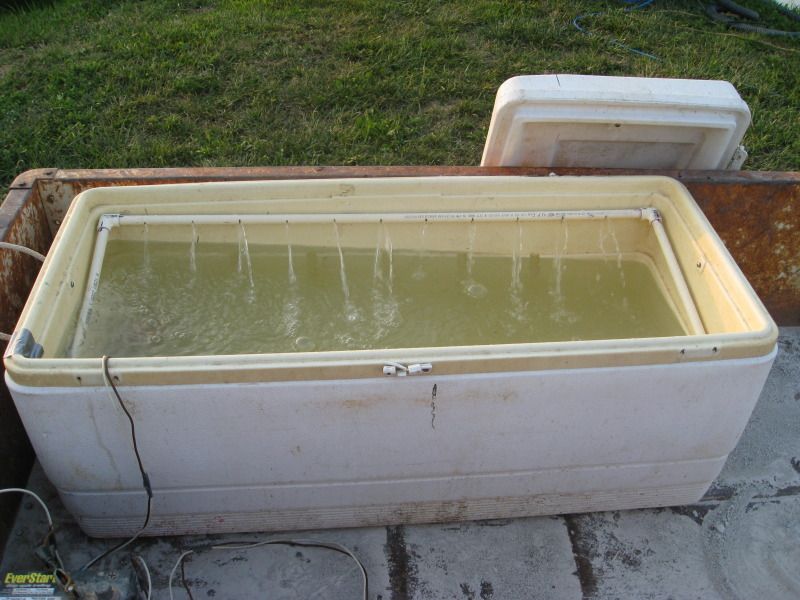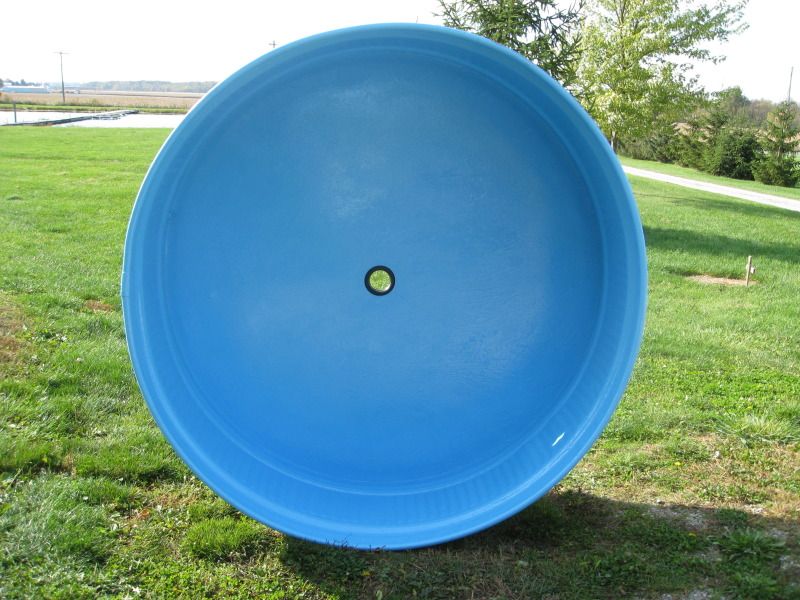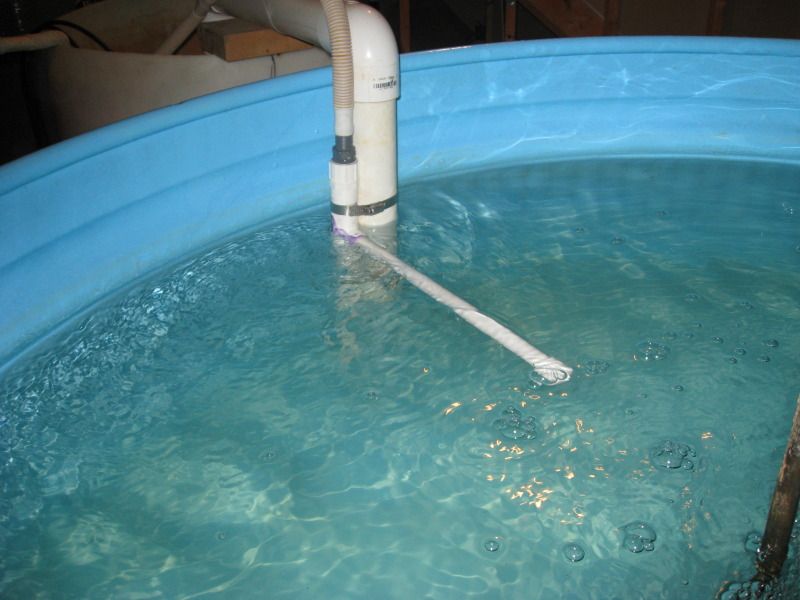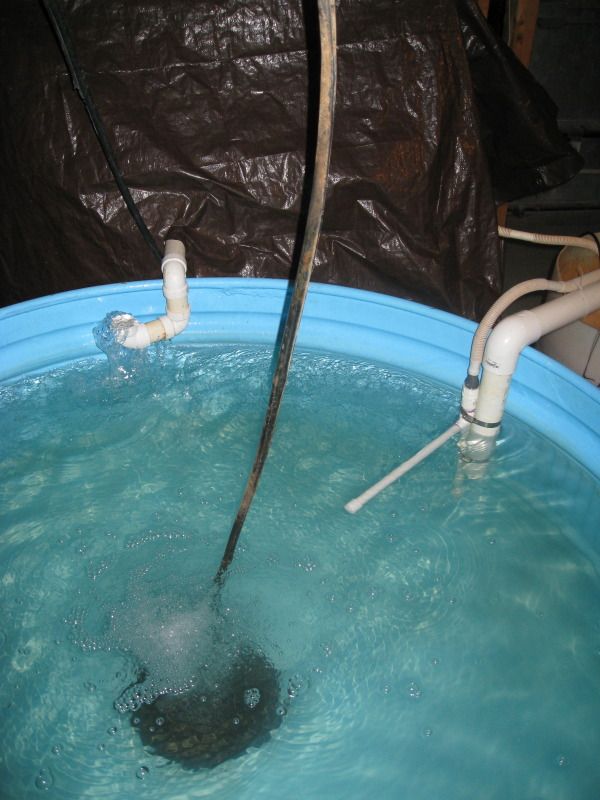The cooler ready for YOY fish from the pond. Thanks to an individual named Ken Grymala's post on the Pond Boss forum, I found the idea to built a neat portable spray bar for it that is powered by a 12 volt battery with the use of a small bilge pump.

Some of the 725 YOY perch I took out of the yp production pond in August. They were placed into a floating cage in the largest pond until the RAS was ready. I usually wait until October to seine out the fish, but I was having some D.O. issues with the production pond due to extremely high water temps and an excessive algae bloom this year.

Here's one of my two 300 gallon galvanized stock tanks after I stripped off the old epoxy, removed the rust, acid etched the galvanized surface and repainted with Sweetwater (AES) epoxy primer and epoxy. The black thing in the center is a Uniseal that takes the place of a more expensive bulkhead fitting.

The center drain with a homemade antivortex cover. The 3 inch PVC slides through a Uniseal installed in the tank and connects to a couple which connects to a drain assembly (See next picture). A 3 inch slip PVC shower drain with the mesh pattern cut out is part of the drain. The lip was not big enough to prevent from pushing on through so I made a washer out of plastic wall covering. The diffuser is mounted on top of this cover.

The center drain before it connects to the clarifer tank. Note the gate valve. A coupler just under the fish tank and here in the photo allow me to take apart the system for moving if necessary. This is the second tank I have in my basement. This one is for primarily yellow perch, is only 200 gallons, and is made of HDPE.

Here's pic of the drain assembly excluding the fish tank. Not pictured is a hose that connects the other side of the 't' with a ball valve to close it. The end of the hose sits inside my floor drain of my basement that goes to my septic tank.

O.K. here's a pic of two drain lines coming together from two different tanks before going to the floor drain. I also have an end cap on the end of the drain line as a fail safe in case there is a leak in the ball valve. I had a tank drain on me once at night while I was sound asleep. It will never happen again.

Here's a unit identical to one I have in my basement I built and set up for the wife's high school ag classes in their greenhouse. They presently have about 300 4 to 6 inch YOY yellow perch and over 100 bluegills in it. I hatched them and feed trained them in a couple of my ponds. The picture was taken before the RBC (rotating biological contact filter) was covered and the tank was filled. If all goes well they will be planted back into one of my ponds just before the school year ends.

Edited by az9, 30 December 2011 - 12:57 PM.
















